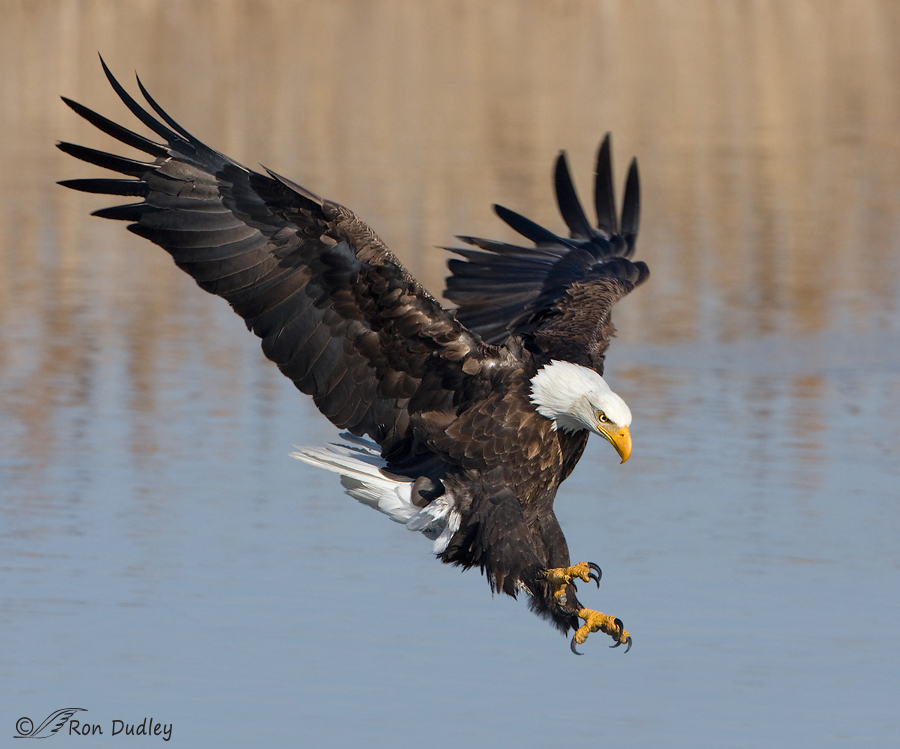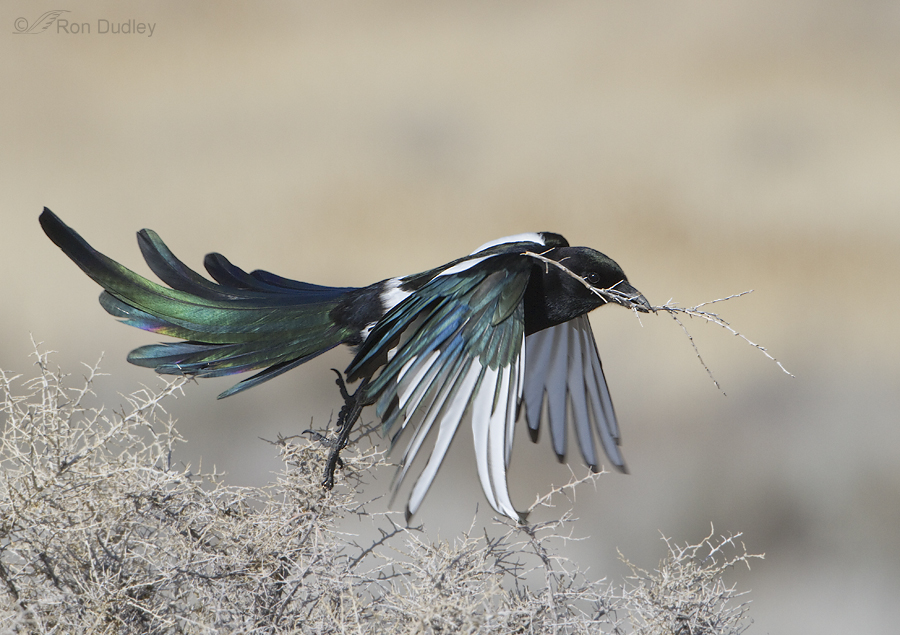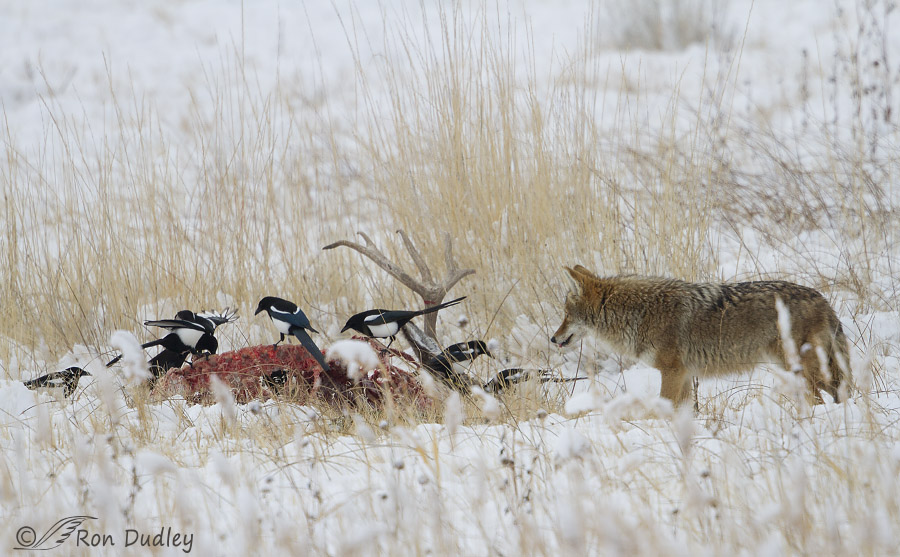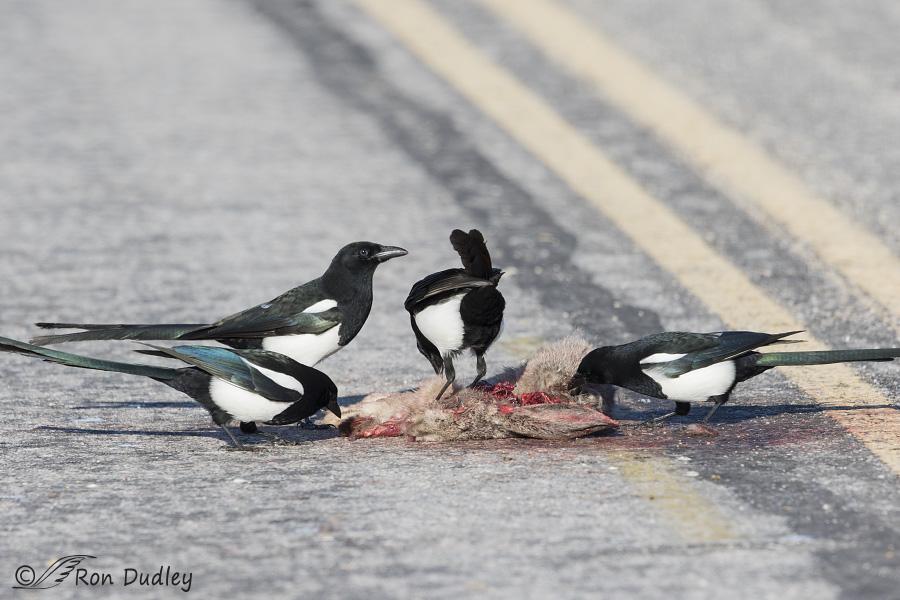The scavenging lifestyle often gets a bad rap, undeservedly so in my opinion. I believe it’s at least partly because the thought of eating dead, often rotting animals that were not originally killed (and are often stolen) by the consumer seems distasteful and somehow less “honorable” than the strict carnivore that kills and eats its own fresh prey.
 1/1000, f/8, ISO 500, Canon 40D, Canon EF 500mm f/4L IS USM, not baited, set up or called in
1/1000, f/8, ISO 500, Canon 40D, Canon EF 500mm f/4L IS USM, not baited, set up or called in
The majestic Bald Eagle, a species known for extensive scavenging, was chosen as the US National Emblem in 1782 but not without controversy in choosing the symbol. In later years Ben Franklin (who along with Thomas Jefferson and John Adams were assigned the task of choosing an official seal for the new nation) famously wrote to his daughter:
“For my own part I wish the Bald Eagle had not been chosen the Representative of our Country. He is a Bird of bad moral Character. He does not get his Living honestly. You may have seen him perched on some dead Tree near the River, where, too lazy to fish for himself, he watches the Labour of the Fishing Hawk (Osprey); and when that diligent Bird has at length taken a Fish, and is bearing it to his Nest for the Support of his Mate and young Ones, the Bald Eagle pursues him and takes it from him.
With all this Injustice, he is never in good Case but like those among Men who live by Sharping & Robbing he is generally poor and often very lousy. Besides he is a rank Coward: The little King Bird not bigger than a Sparrow attacks him boldly and drives him out of the District. He is therefore by no means a proper Emblem for the brave and honest Cincinnati of America who have driven all the King birds from our Country…”
The scavenging lifestyle is perhaps more common in nature than some realize. Many insects, fish, birds and mammals scavenge extensively – the list would include crabs, lobsters, eels, many sharks and other fish, vultures, opossums, raccoons, hyenas, lions, leopards, wolves, coyotes, foxes, bears and hyenas.
Ravens, crows, magpies and gulls are some of the birds in my area that often scavenge carcasses.

1/2000, f/8, ISO 400, Canon 7D, Canon EF 500mm f/4L IS USM, not baited, set up or called in
In my experience people often have highly conflicting views on magpies. They’re much admired by some for their beauty, resourcefulness and intelligence and others despise them for their raucous, aggressive behavior and their scavenging ways. They just seem to be one of those “love’m or hate’m” kind of species. Seen as in the image above they can be very easy to admire but…

1/2000, f/6.3, ISO 640, Canon 7D Mark II, Canon EF 500mm f/4L IS II USM + 1.4 tc, not baited, set up or called in
when there’s a mob of them on a carcass fighting for scraps of rotten meat they’re often seen as unappealing and less than honorable. From a distance like this the human observer doesn’t see the gory details very well but…

1/2000, f/6.3, ISO 500, Canon 7D Mark II, Canon EF 500mm f/4L IS II USM + 1.4 tc, not baited, set up or called in
when seen up close, as on roadkill, the scene can be quite distasteful to some.
Audio deleted because of distracting sounds (don’t watch if you’re squeamish).
Several weeks ago I photographed at least a dozen Black-billed Magpies as they gorged themselves on this road killed rabbit on Antelope Island. Birds would fly in, grab a bite or two as they squabbled over food and rank and then fly back out and wait for another chance at what was left of the flattened rabbit. When folks encounter a scene like this they are often left with a less than positive impression.
Consider where we’d be without scavengers. They provide an important ecological service by reducing dead animals (and plants) to simpler constituents which prevents an excessive accumulation of dead biomass (bodies) which would not only be unsightly (and smelly) but represent an indirect health hazard to living animals, including humans, by enhancing the survival of pathogens.
I salute the scavengers. And thank them for what they do.
Ron


I’m caring for a Turkey Vulture right now, the only one I’ve had for more than a couple of days. I make sure he has some “new” food each day, but I also give him the left overs. Gave him a duck carcass that the hawks had already worked over. He picked at it until all the tiny bits were extracted, leaving the skin and bones intact. Could have stuffed it, sewn up the belly and had a museum specimen. Amazing!
When I see scavengers on the roads, I bless them for their part in the circle of life. Without them, just think of the smell of rotting flesh. All things have a purpose in my world…even annoying fleas. I don’t have to LOVE the fleas, but I do have to acknowledge them for their part in our world.It’s part of my religious beliefs actually. OH NO, run away! She mentioned religion. Next thing it will be politics. RUN AWAY.
I don’t have to LOVE the fleas, but I do have to acknowledge them for their part in our world.It’s part of my religious beliefs actually. OH NO, run away! She mentioned religion. Next thing it will be politics. RUN AWAY. 
Absolutely stunning photographs
Great shots and interesting info Ron!
Charlotte
Terrific photos, as always, Ron.
Biologists make distinction between scavengers, and most birds will do a bit of scavenging form time to time – and kleptoparasitism, that behavior the old Ben Franklin complained about in the letter to his daughter. Some species of birds, like Frigatebirds, are almost exclusively thieves, who get all their food by stealing it from other birds.
We humans tend to anthropomorphize birds, and the more a bird steals for a living the more we deplore and dislike it. It’s not logical or fair. But it’s what we do. Darwin had harsh things to say about the Galapagos Vampire Finch…
I always find it ironic when people turn up their noses at scavengers – because, hey, what the heck are we? Few of us hunt our own meat – we may buy it refrigerated and covered with plastic, but it’s still carrion. I know it’s beyond the call for most people, but carrying a fold-up shovel in the car and moving road kill as far as possible off the road is a huge benefit to scavengers. (And wildlife rehabilitators who get the scavengers after they’ve been hit by a car, if they survive!)
We all have to eat, and they have to take care of themselves in ways we would never dream of. I get a kick out of Ravens. A lot of people do not enjoy them. However, they are highly intelligent. They enjoy teasing, and have no remorse lol. Yet, they are so tender and loving to their mates. We get a Raven in our yard now and then who actually sings to me, and I sing back. They are a joy in my book. Wonderful pics Ron.
“and I sing back”
I love that you do that, Jean!
Scavengers (with the exception of politicians) do a necessary job and I too salute them. And am very thankful for the work they do. A question of balance, which we could not achieve without them.
Love your exception, EC. Accurate and appropriate with relatively few exceptions.
Ron, those brave magpies were in the middle of the road! I also salute them and wish them well. Thanks for the video. I could never have imagined them jumping up without it.
I’m glad you enjoyed it, Diana. Thank you.
Hi Ron, I totally agree with your way of thinking. Mother Nature has assigned all living creatures their particular job to do while on our planet. Not always pretty but it all comes together.
“Not always pretty but it all comes together”
Yes, it does, Linda – at least when we let in alone to work in the way it should.
The photo of thr magpie in the second frame frame looks very familiar…like one of my all-time favorites…am I right that it’s one of your older ones? Is it one that a slime who definitely knew better tried to steal???
Both of the first two images are older shots. A large print of the magpie is hanging over my fireplace. And yes, that’s the one that “that lady” tried to steal, then lied about it. Both of those first two images have been stolen multiple times but in the end some have had to pay for doing so.
I recently finished a watercolor of an eagle zeroing in on a fish for someone who, thankfully, wanted a painting instead of money. It was similar to the one in your photo, but I wish I’d used the same angle you caught instead of the one I used…NUTS!
There’s always a next time, Patty!
Makes me want to ask for the painting back and paint a new one…love the continuous line from the right wing down through the body and out through the talons…I wonder if I coukd sneak into his house when he and his family are asleep and…..
A friend of mine, a former gallery owner, used to know someone who did something similar. He’d sneak into the gallery, steal his own painitng, work on it some more, then sneak it back in…
In a way that’s a little like what I often do with my own blog posts, Patty. After I publish I notice little typos, or things that could have been said better, or a tweak or two I wish I’d made on an image during processing – so I often go back in and fine tune things.
What a great idea – but, I think I’d have a hard time doing that with a finished carving!!
It would end up being a pretty small carved duck after multiple “corrections”, wouldn’t it, Dick? With lots of wood chips as a by product.
Ha, Ha, Ha! Since I paint them after I carve them, there is always, and i mean always a period where I’m fighting myself whether or not I should have added this tone or that tone, or did i add enough dark to the vermiculation, etc., etc. All of which I have to resist! Art, in my mind, whether it is working with wood or painting is always a learning process, working with ideas, putting into action ones creativity!
These are wonderful shots…love the detail and the angle of the eagle(even though, HOORORS!, a couple of primariescare NOT in absolutely crisp focus!!!). The second , incredibly beautiful shot of that gorgeous magpie in all his iridescent glory, and the dancing magpies feasting on the Easter bunny. I only wish I had a couple of scavengers, of any kind, in my refrigerator– to clean out some of the stuff I tend to forget until it’s too late…bring ’em on, PLEASE!!!
(Can you imagine what our roads would be like without these guys!!!?) Jeeeez!
Ha, bet my fridge is worse than yours, Patty. Hate finding green things in there that aren’t supposed to be green…
I had an obnoxious, young nephew who always felt free to go into anyone’s fridge and take what he wanted without asking. One day, I had a small, plastic, container of tiny worms to feed a baby ring-neck snake, and some other small critters. Much to my horror (and delight), Gary, whose parents entertained frequently and therefore always had a lot of exotic “appetizers” in the fridge, helped himself to a bite or two of them on crackers. I’ve forgotten the name of the worms, but they are grown in sludgey conditions…is it tubeflex? Doesn’t sound right…any way, It cured him of going in my fridge…He’s a grandfather now, so obviously he survived…and, thankfully, lives in Oregon.
Green things…with “hair”!!!
I think the worms you’re referring to are called tubifex worms.
Oh the memories. We used to feed tubifex worms to our fish. They were difficult to get in the country town we lived in. So a friend picked some up for me in the city, and sent them to me via the ‘internal mail system’ at work. An overnight delivery. Except that bag got misplaced and took ten days to arrive. I wasn’t popular in the office when that bag was opened. At all.
Another great and educational post! Pretty fair photographs, too. Although, I think I did see one tip of one feather on the eagle that was a little soft in focus —
… “love’m or hate’m” kind of species. I don’t live near Magpies, but, so far, I haven’t found any of those “hate’m” kind of species. I feel privileged to see any of them.
“I feel privileged to see any of them”
As do I, Wally – with the possible exception of a couple of invasives…
I think there’s actually about 4 of those out of focus feathers…!
Here’s how I came to appreciate scavengers : A huge and ancient skunk who lived in my neighborhood died ( apparently of natural causes ) on hillside not 50 feet away from my
kitchen window. I was leaving for work in the morning, and I could already smell him ! I returned home about 3 PM to find 2 Turkey Vultures hard at work on the skunk’s remains.
The next morning, all that was left was ( I kid you not ! ) a white strip of fur ; maybe even vultures have ” had enough” at some point………..
Great example, Kris. I loved it!
I agree, this is a great post! You are certainly more aware what scavengers do in the west or on a wide open spaced wildlife reserve than we have here in the east.
It wasn’t as apparent to me how necessary they are until I went to Africa and spent several days in the Serengeti. There we saw a lion kill, hyenas, and vultures demolish the caracas of a Zebra in half a day. One can only imagine what a hot smelly disease ridden place an area would be without scavengers. Scavengers fill an ecological niche that is absolutely vital!
Thanks again for this post!
You make a good point about places like the Serengeti where large herbivores are so abundant, Dick. It sure wouldn’t take long, without scavengers, before the place would be incredibly unpleasant.
Yes, decomposers would eventually do away with each individual carcass but that slow process certainly wouldn’t keep up with the supply. And oh the smell!
Great post, Ron!! Wonderful presentation on the importance of scavengers. However, one of the sad drawbacks I’ve learned from watching and learning more about eagles and other raptors is that the larger birds can often be hit by carswhen scavengering. When trying to fly off from road kill either in or close to the side of the road, their weight requires more time to get air born and they can’t out fly a fast moving car or truck. We bird lovers should try to be aware when out on the road and try to avoid hitting one of these important scavengers. In my area, we see more and more Black vultures in our communities looking for recently killed animals.
Yes, the problem you describe is a significant one, Jo Ann. I’ve come very close to hitting birds scavenging on roadkill myself and I try very hard to be careful in such situations. Thankfully I’ve never actually hit one, so far.
Good shots, Ron. I do have mixed feelings about magpies even understanding their place in the scheme of things – that’s the key, it all fits together. The road kill deer here attract everything from Bald Eagles, Golden Eagles, Ravens and, of course the Magpies along with Coyotes. Always interesting to observe how they all interact.
I do have mixed feelings about magpies even understanding their place in the scheme of things – that’s the key, it all fits together. The road kill deer here attract everything from Bald Eagles, Golden Eagles, Ravens and, of course the Magpies along with Coyotes. Always interesting to observe how they all interact.
“Always interesting to observe how they all interact”
I agree, Judy. For example, in the third image in this post the coyote simply waited by the carcass and allowed the magpies to feed. I thought it would drive the magpies off but it didn’t. Perhaps it had already eaten its fill but I just don’t know…